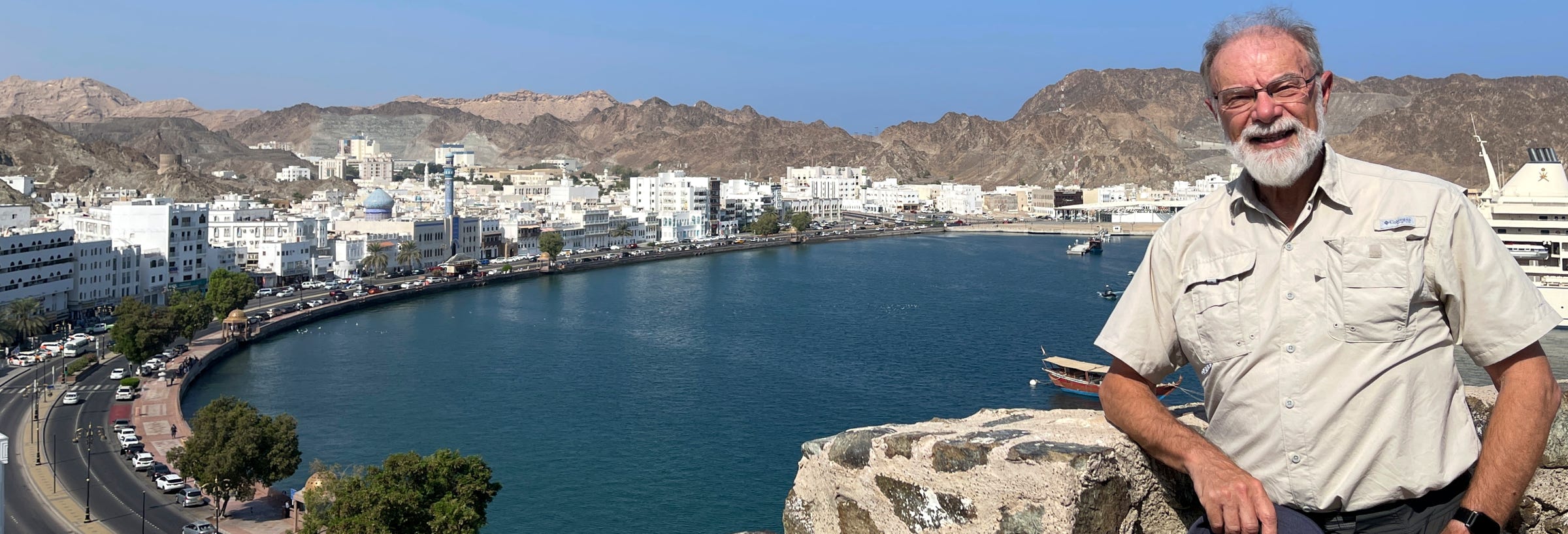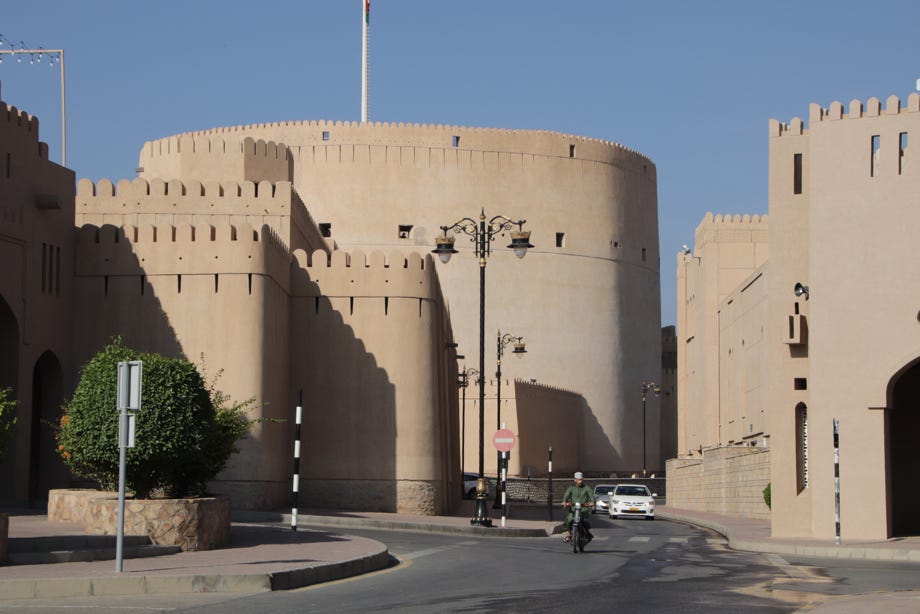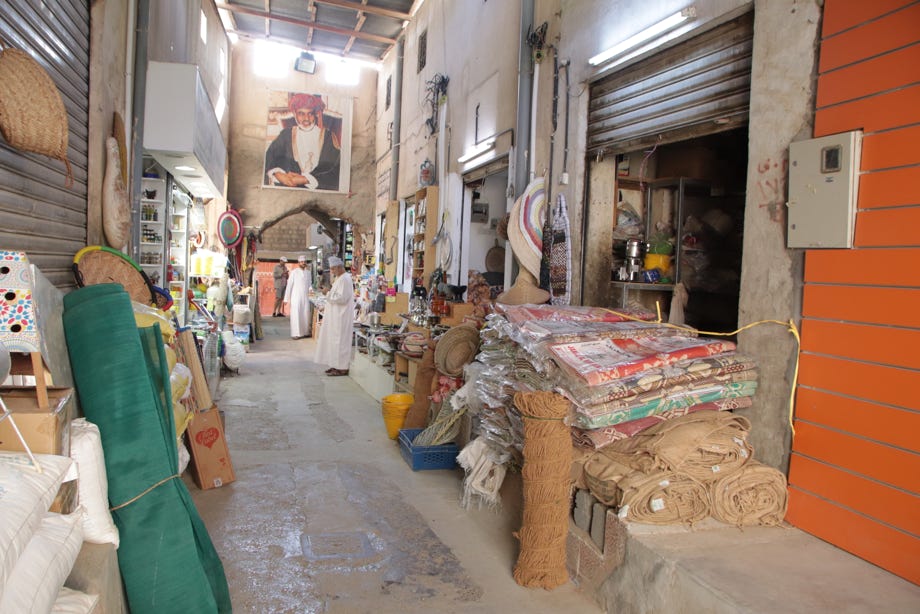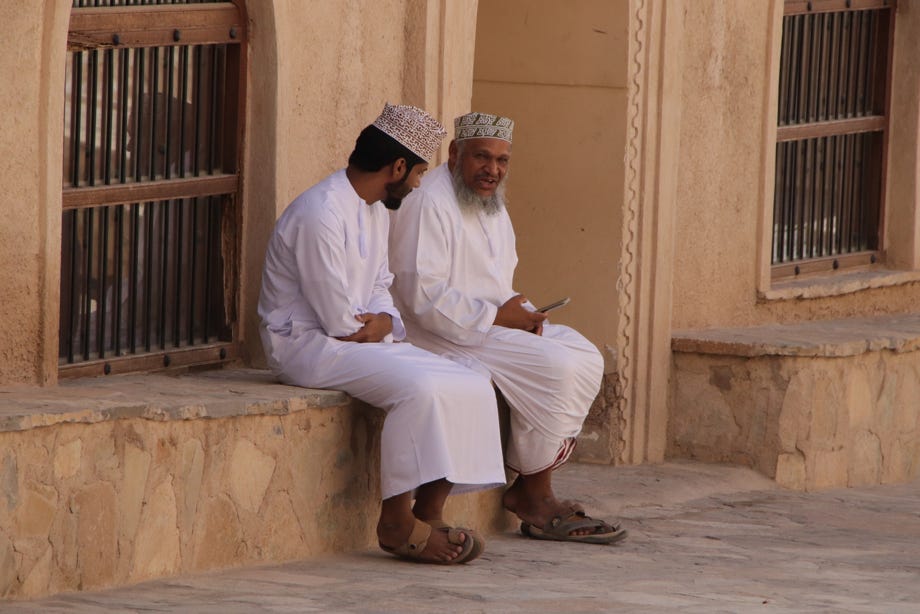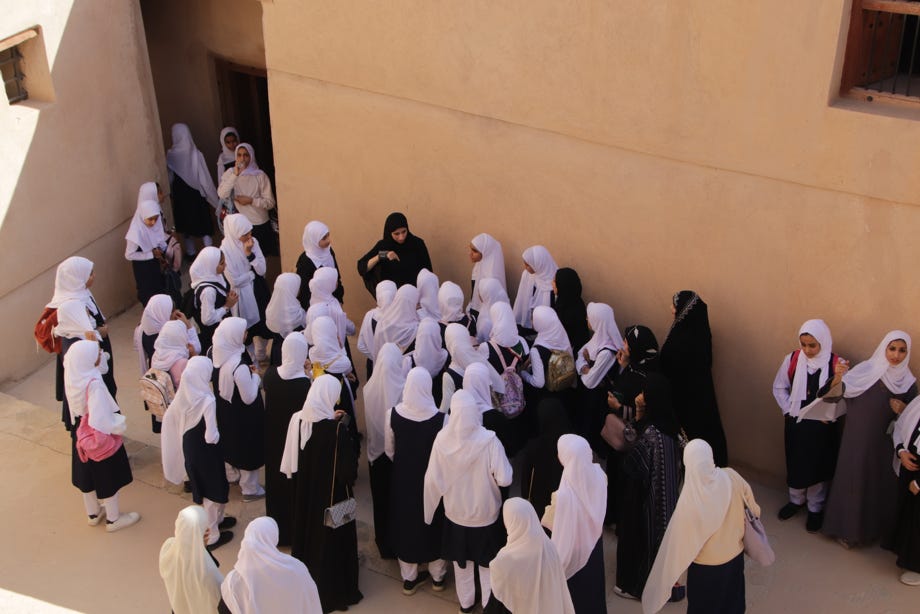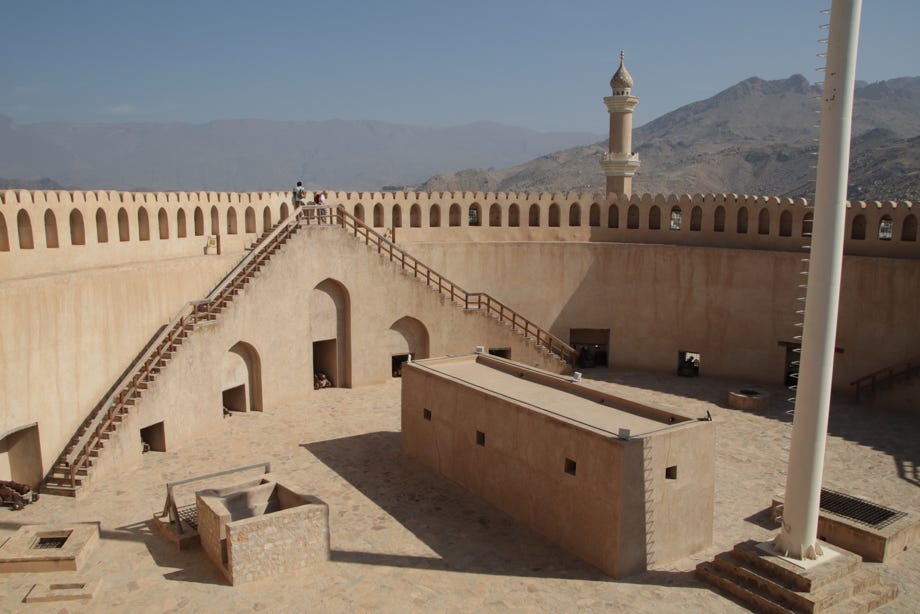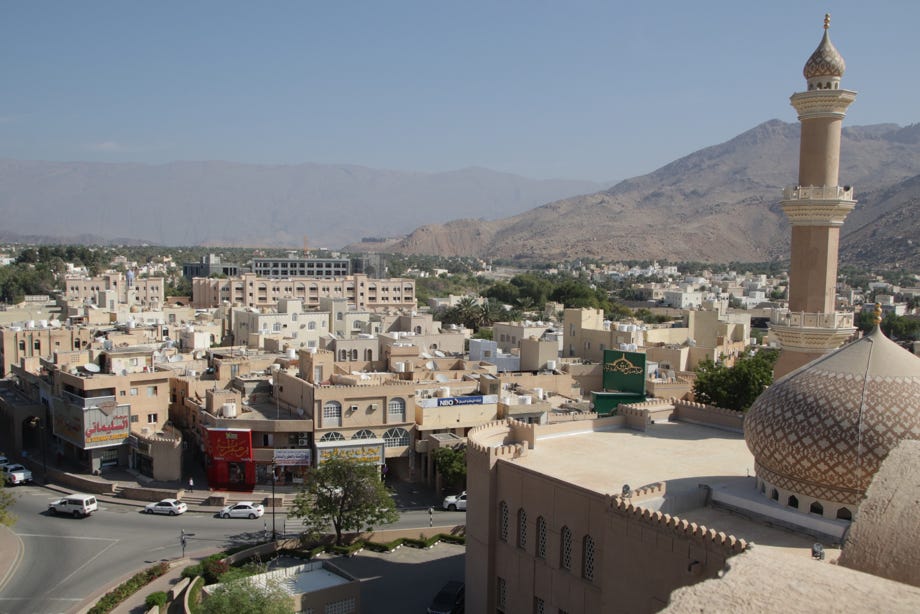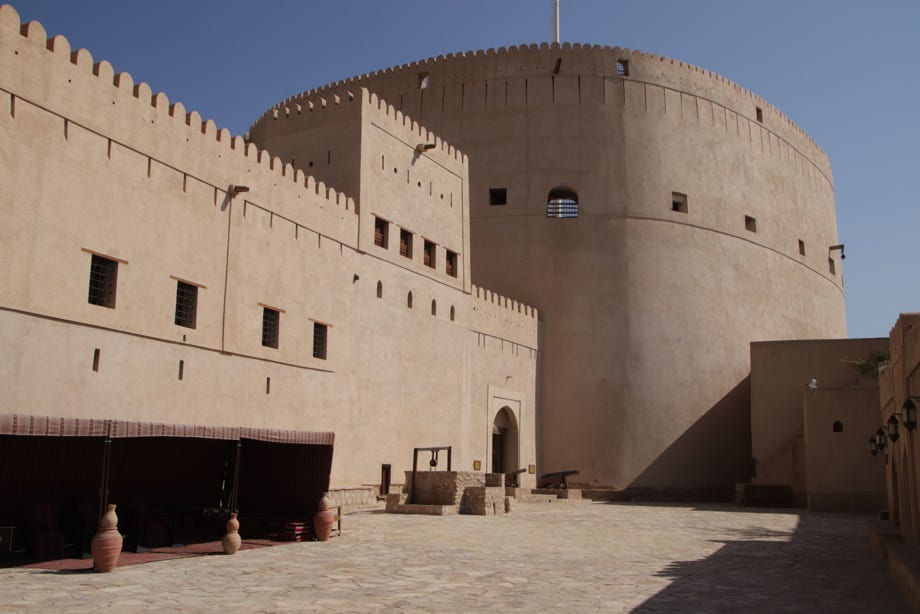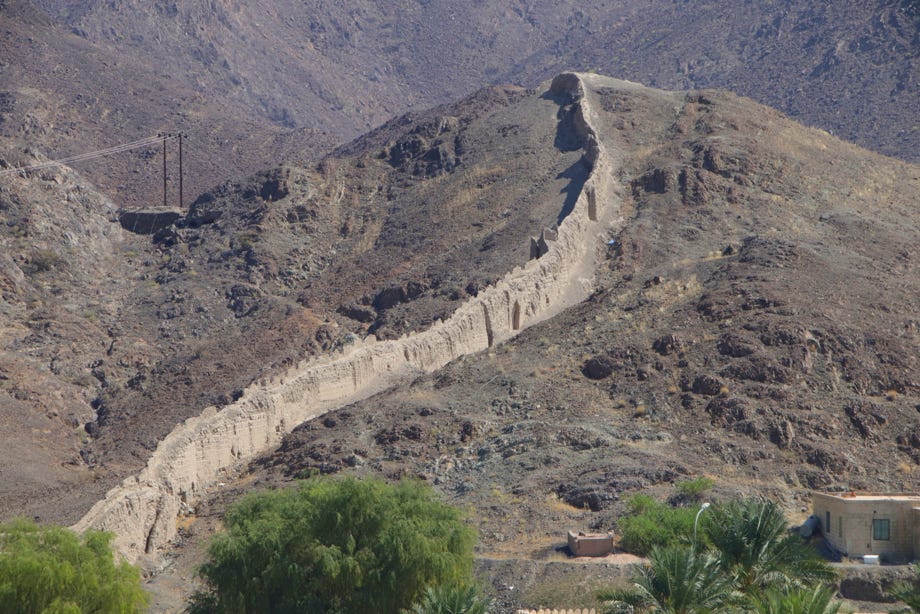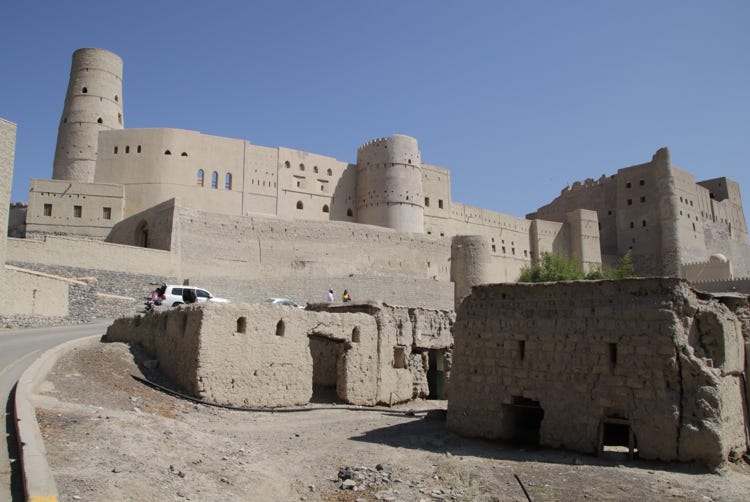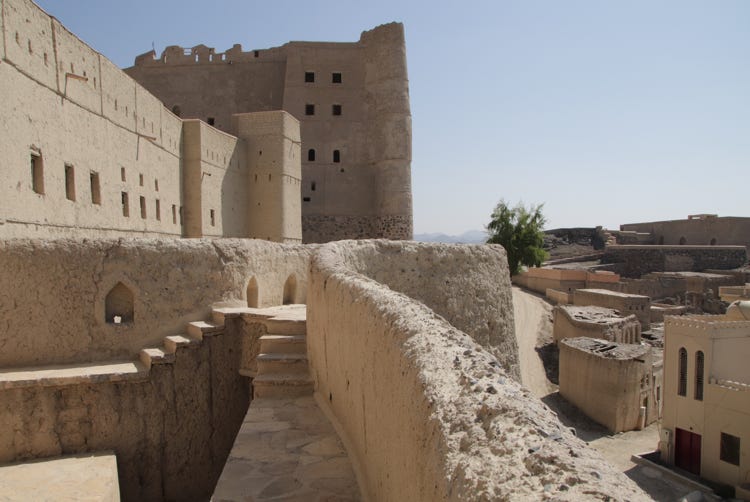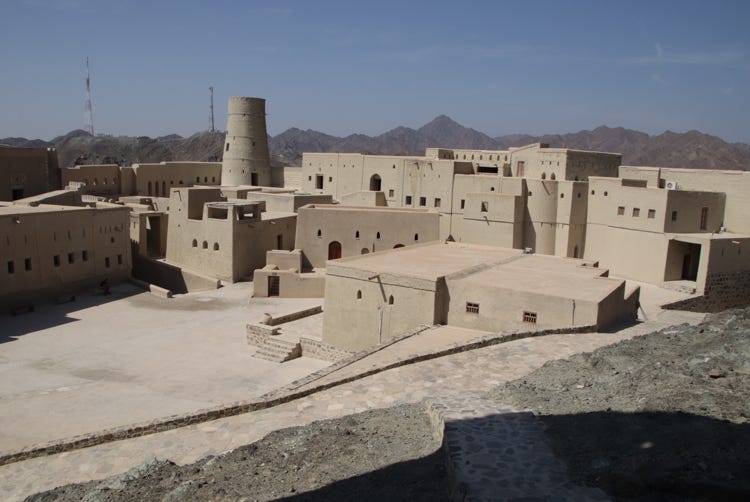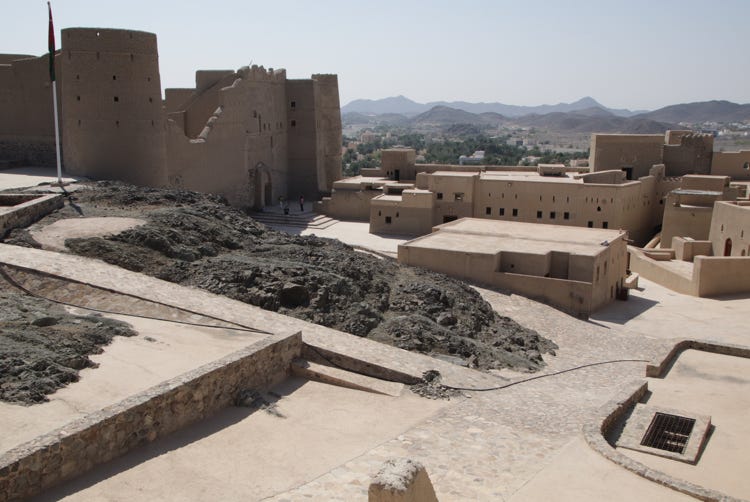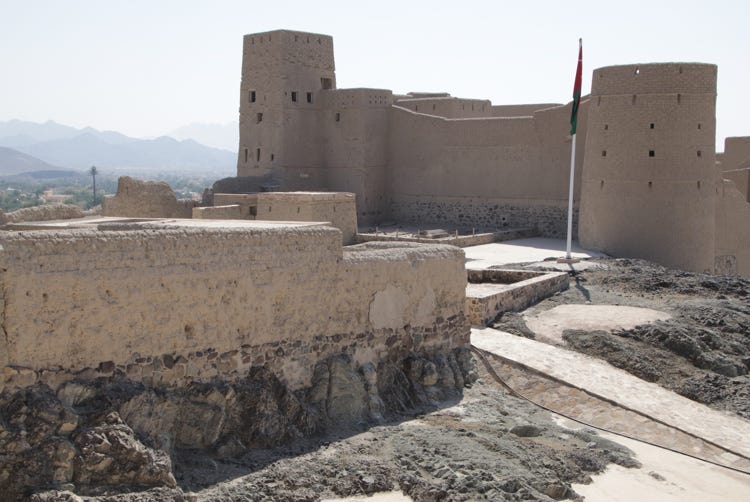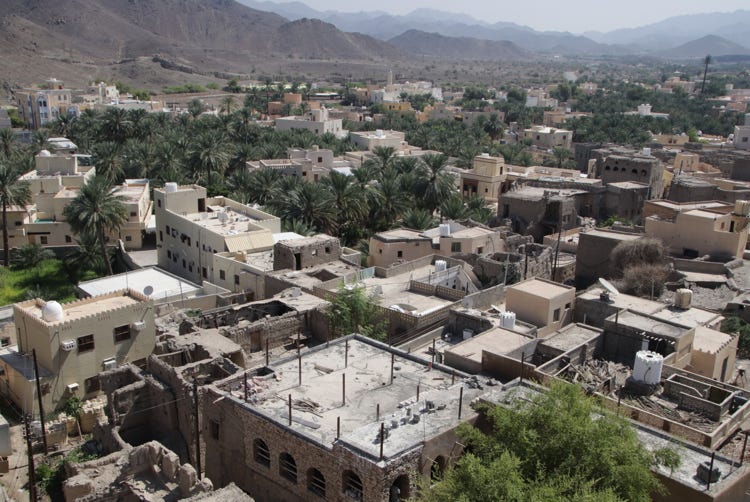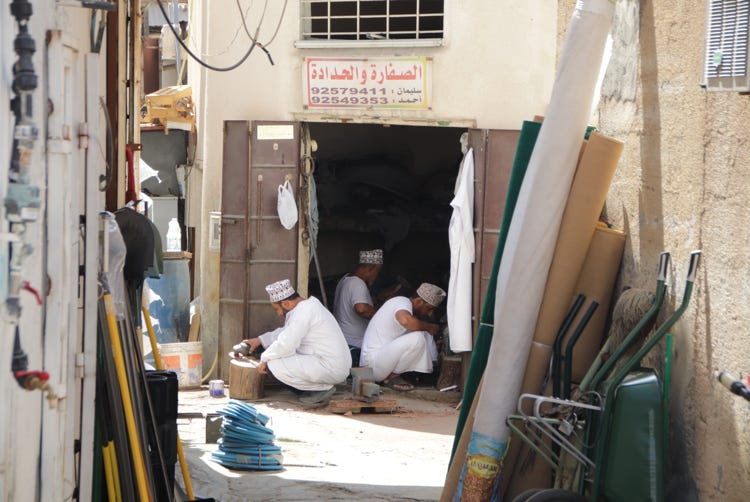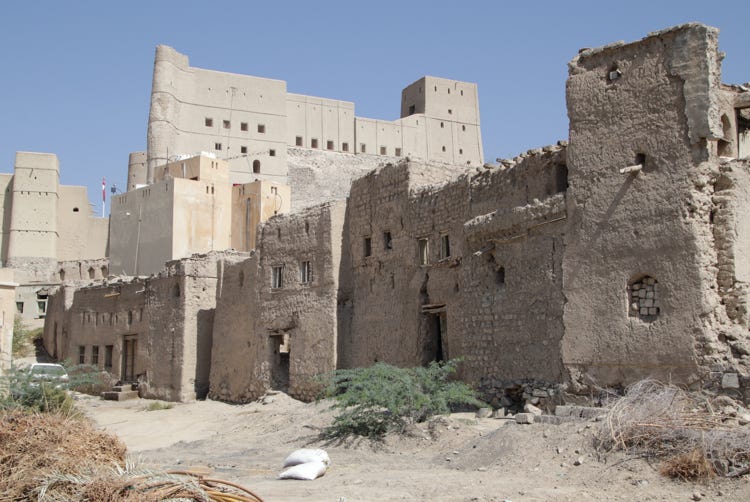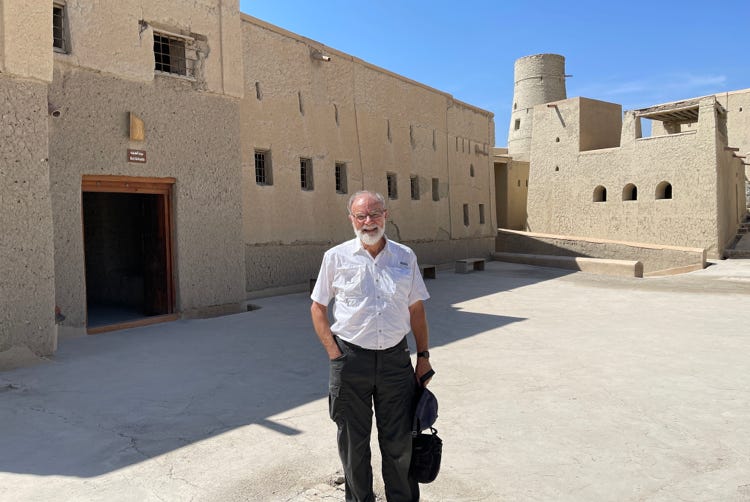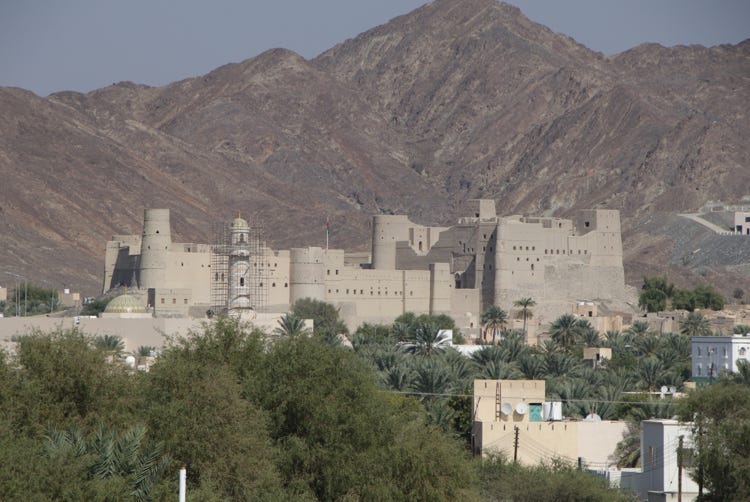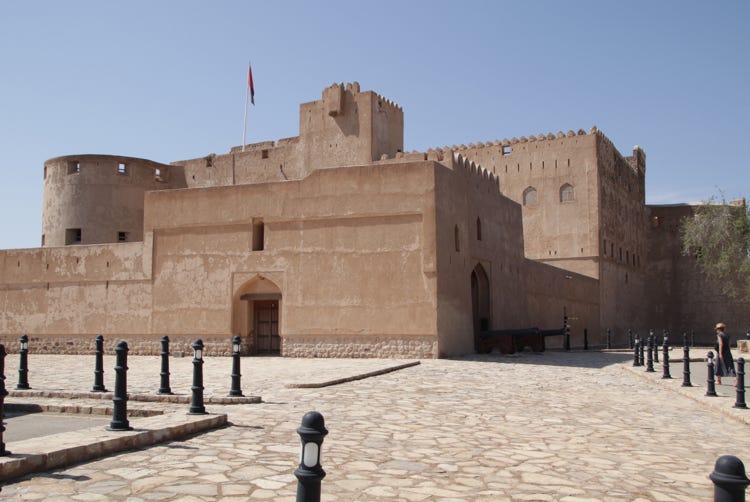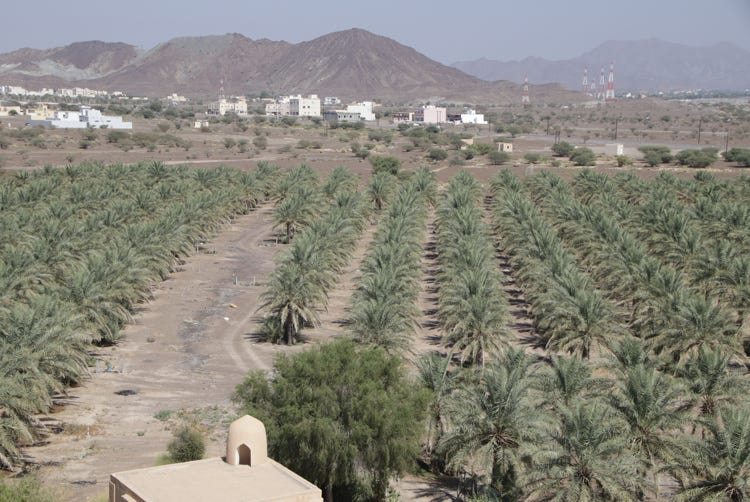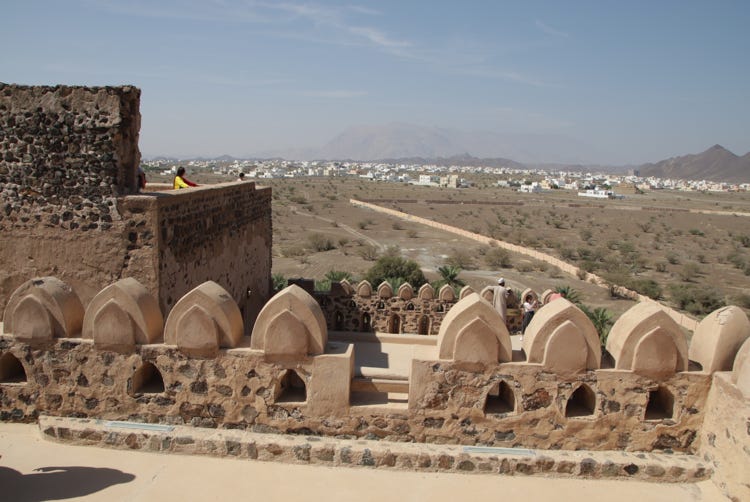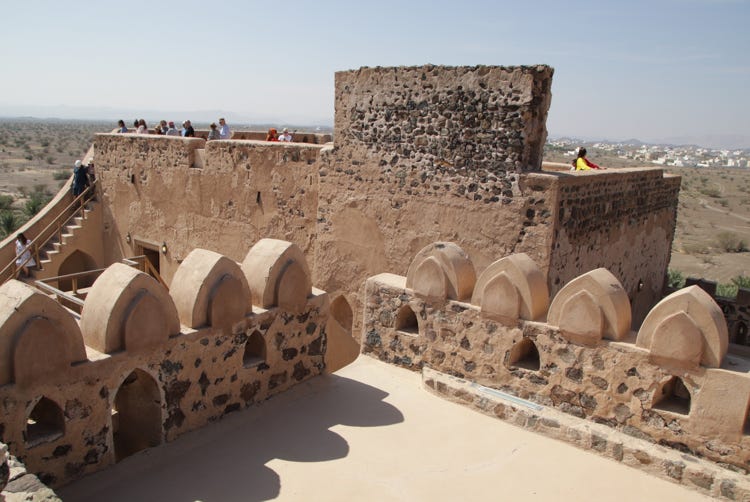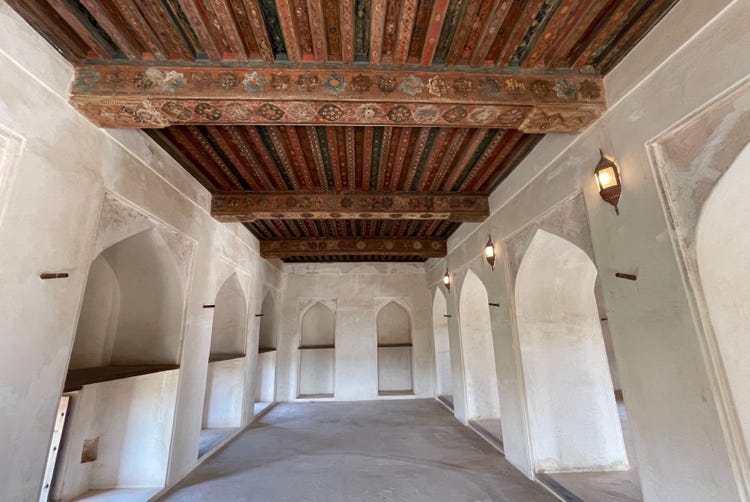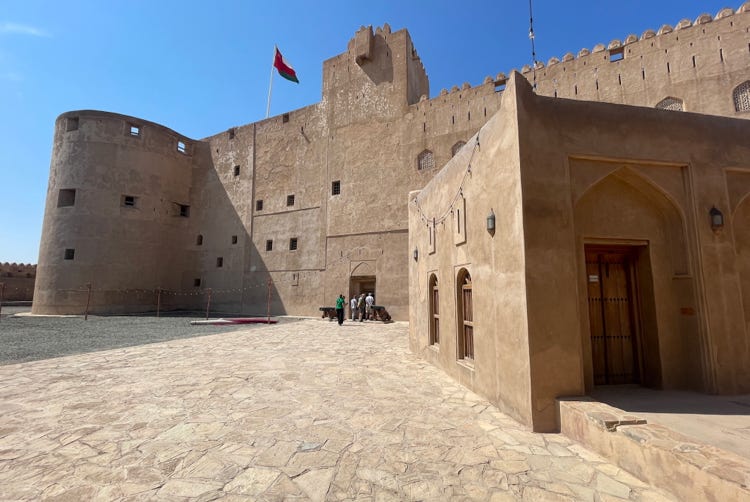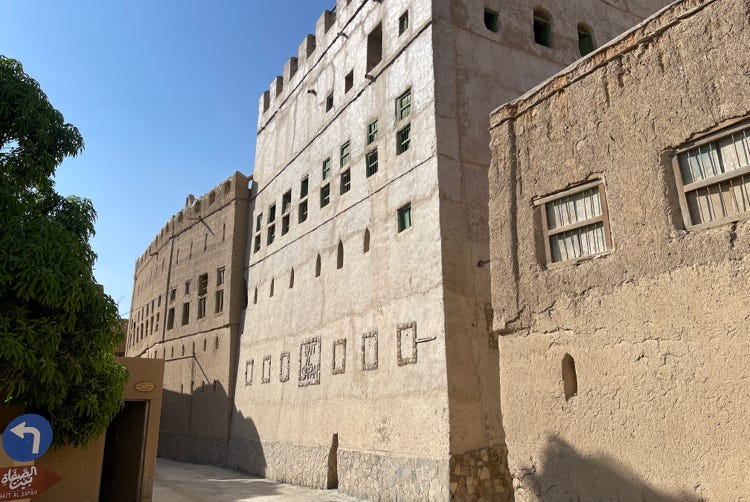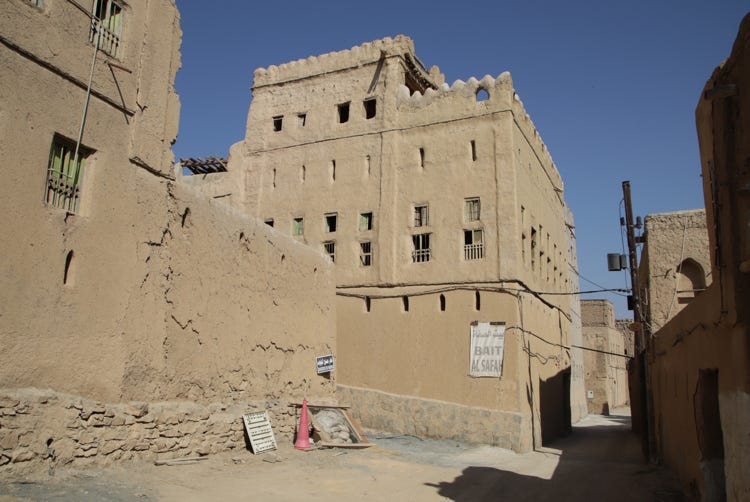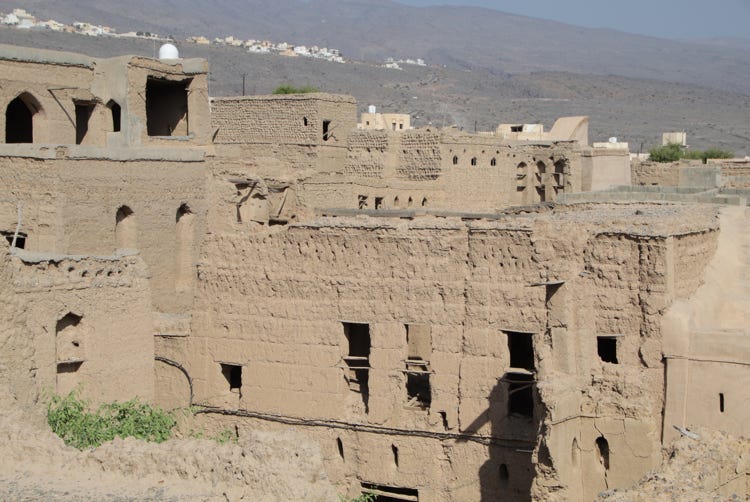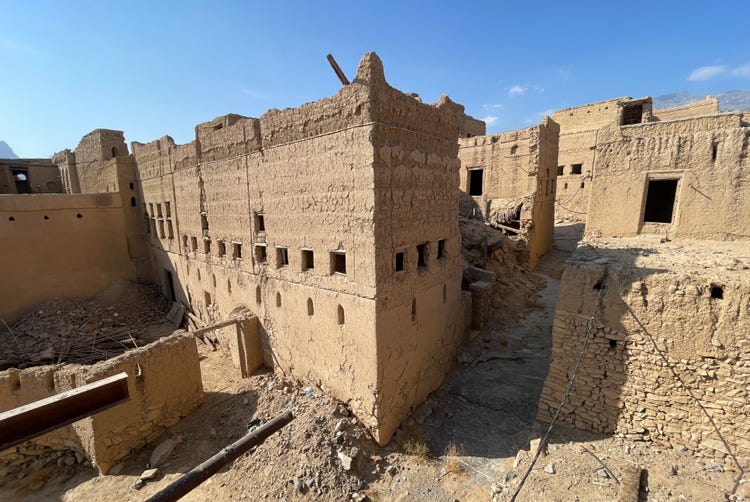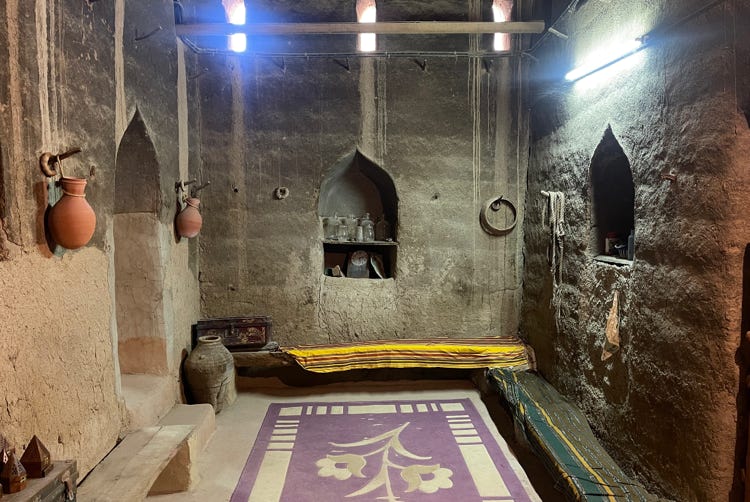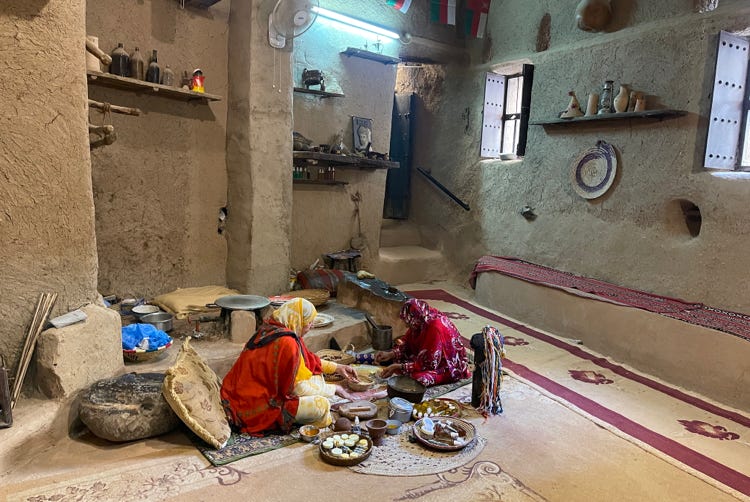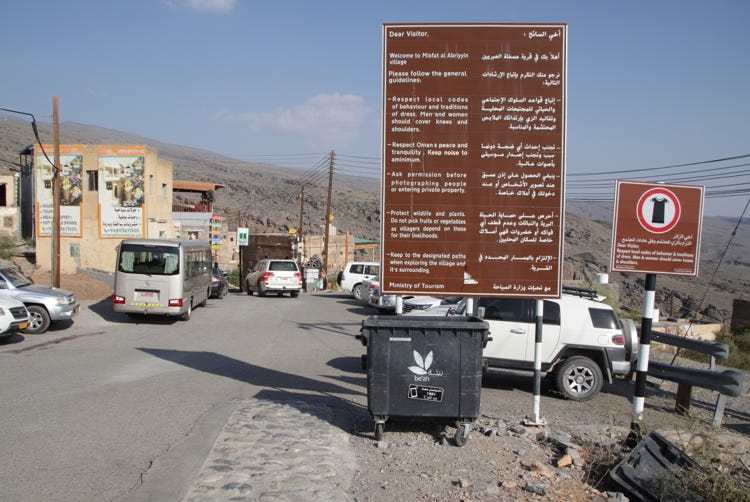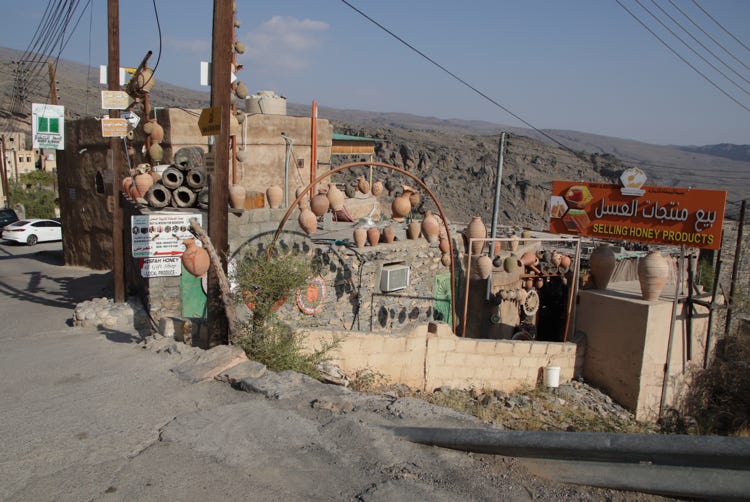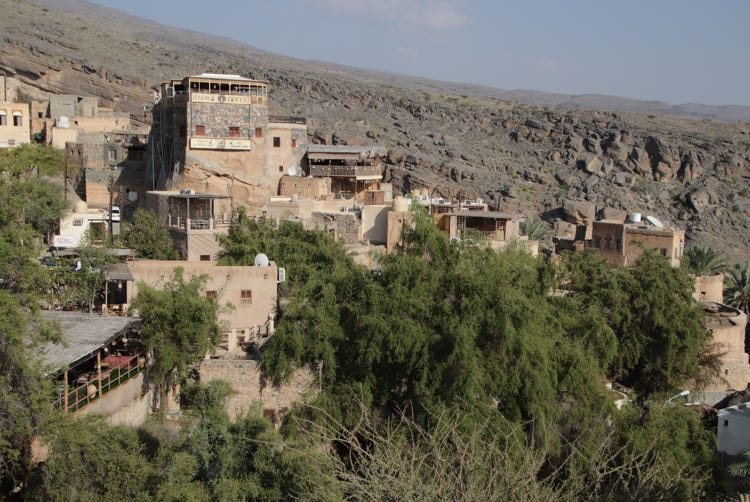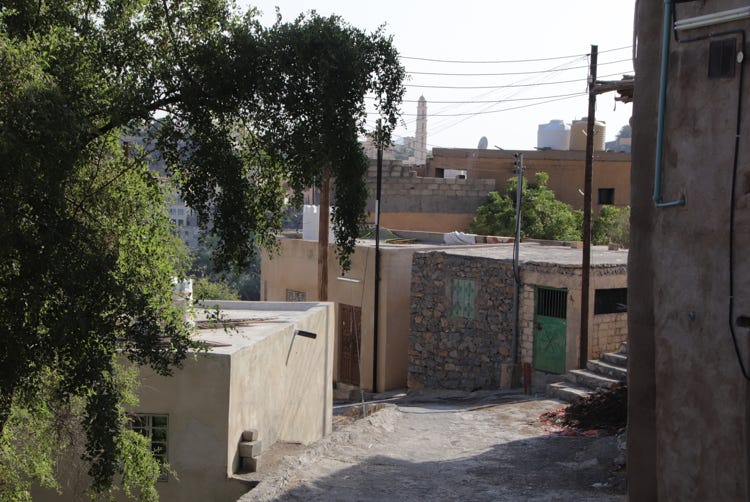This was my big day to visit some of Oman’s most important landmarks, made possible by the continuing generosity of the School Principal who insisted I use his car to make the planned circuit of some 480 kilometres.
I had breakfast as soon as the hotel’s restaurant opened (at 6:30am), enabling me to begin my drive at about 7:10am.
The first sector of my drive took me 175 kilometres inland from Muscat to Nizwa, Oman’s former capital city. The drive took me about two hours along an excellent highway (if we ignore one long section under reconstruction). After parking the car in the central open car park, the first thing I did was to make a Video facetime call to my son who was celebrating his 40th birthday on that day.
Nizwa is known as a very conservative town. As recently as the 1950s, the city was regarded as a closed area because of the inhabitant’s resistance to outside influences (and therefore visitors). Today, however, Nizwa is one of Oman’s major destinations for visitors.
After the video call, I began exploring the city in Nizwa Souq (the traditional market arcade) which is located right beside the car park and forms the approach to Nizwa Fort (the city’s biggest drawcard). The souq had the appearance of a traditional covered market that hadn’t changed for centuries, with small stores selling a large variety of goods including spices, rugs, coffee making pots, food, jewellery, household goods, and so on.
Having explored the souq, I arrived at the entrance to Nizwa Fort. The 40-metre high round tower at one end of the fort dominated the skyline of central Nizwa. Although climbing to the top of the tower to take in the surrounding views of the city, the surrounding date plantations and the nearby Hajar Mountains was a highlight of the visit, the fort had much more to offer, including courtyards, rooms for various purposes, and displays of historical weapons and memorabilia.
My second stop for the day required a 40 kilometre drive to the west from Nizwa to the town of Bahla. It was obvious that Bahla was very old – and very special – as soon as I drove into the town as it is still surrounded by the remains of a 12 kilometre long fortified wall. Having said that, the real highlight of Bahla is the recently restored 13th century fort that has been classified by UNESCO as a World Heritage site.
Many of the buildings were constructed of mud brick, although some parts were made from stone. It was only once I was inside that I realised how large this fortress actually was, and I had a great time exploring its rooms, corridors, roofs, cellars and courtyards. The views were fabulous, especially of the unrestored buildings immediately beside it which served as housing for the fort’s staff, the city walls, and the irrigated farmlands and date palm plantations.
After exploring the fort at length, I exited and crossed the street to explore Bahla’s small souq. Unfortunately, most of the shops were closed and the area was largely deserted, so I took the short 10 kilometre drive south-west to my third stop for the day, Jabreen Castle.
The somewhat boxy shape of Jabreen Castle could be seen from a quite a distance as I drove towards it because it rose from a flat plain and was surrounded by farmland (mainly date palms). Built in 1675, Jabreen Castle was constructed as a centre for learning in the areas of astrology, medicine and Islamic law – quite different from the forts I had visited in Nizwa and Bahla. Although Jabreen Castle was a little more touristy than the forts in Nizwa and Bahla (for example, they were running quite an extensive business catering traditional meals in various rooms for visitors), the building was fun to explore and the views from the roof were sensational (if you like looking down on date palms).
My fourth stop for the day required some re-tracing of the route I had been following. I drove north from Jabreen Castle, passing through Bahla once again to the town of Al Hamra, a distance of 32 kilometres. I had heard that the oasis of Al Hamra contained some well-preserved two and three-storey Yemeni-style mud brick houses, but I had no specific directions to find them. I drove around for some time, and I was about to give up when I made a final check of Google Maps and saw a place called “Old Al Hamra village”.
I followed the narrow, winding, unsealed track and there it was – the decaying (definitely not well preserved) area of mud brick Yemeni style houses. Most of the houses were abandoned and many were collapsing, but one house named “Bait Al Safah” was in good condition, and moreover was open for visitors to inspect.
Bait Al Safah was an unexpected treasure. The three-storey building with a flat roof was still inhabited by an extended Omani family who were using their home as a living history museum, demonstrating old Omani traditions and lifestyle. The family was extraordinarily welcoming, and I was able to see the women of the house grinding wheat and making bread while sitting on the floor of the kitchen, look through every room in the house and take in the views of the decaying mud brick houses surrounding Bait Al Safah from its roof. The hospitality was breathtaking.
My fifth and final stop for the day was only 7 kilometres to the north-east, but it took almost 20 minutes to get there because the sealed road zig-zagged up a steep hill through a succession of hairpin bends. Misfat Al Abriyeen is something rate in Oman - a mountain village can be reached on a sealed road. Clinging to the mountainside, cars cannot enter the village and must be parked in a roadside car park at the western end of the town.
I wandered through the upper portion of the town, watching the time because I knew I had a long drive still ahead of me back to Muscat. There were several guesthouses in the town as well as stores selling local goods, including especially honey. It was one of those places where I wished I had more time because I felt I only scratched its surface.
The sun was already starting to sink in the sky as I began the drive back to my hotel in Muscat – a 220 kilometre drive that took me about 2 hours and 45 minutes. By the time I returned it was well and truly night time. It had been a long day – almost 13 hours of driving, walking, climbing, and of course photographing – but SO satisfying.
I had discovered at first-hand what an amazing place Oman is historically, culturally, visually and socially.
